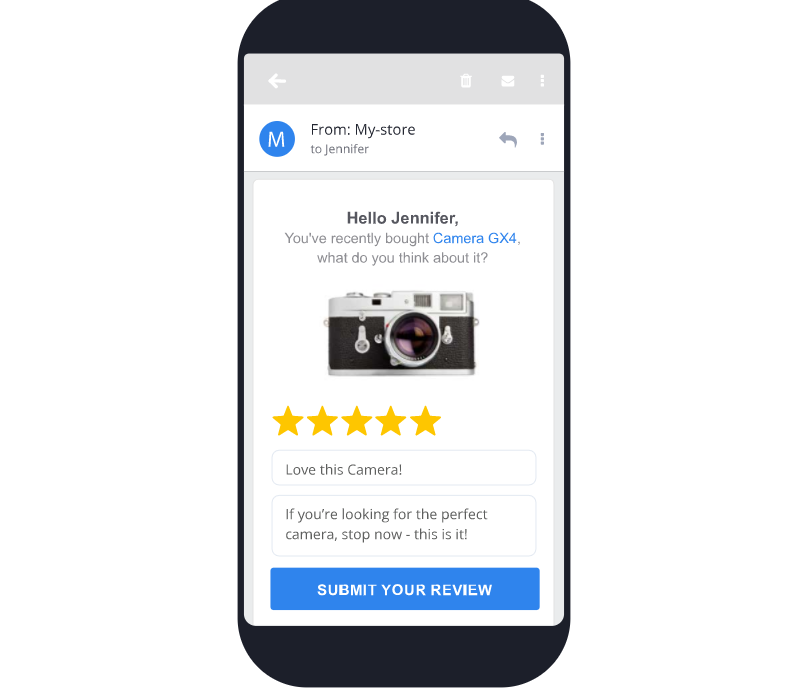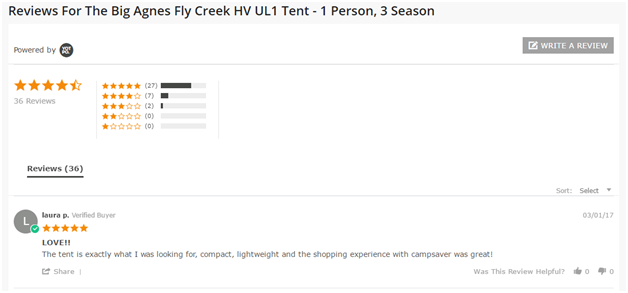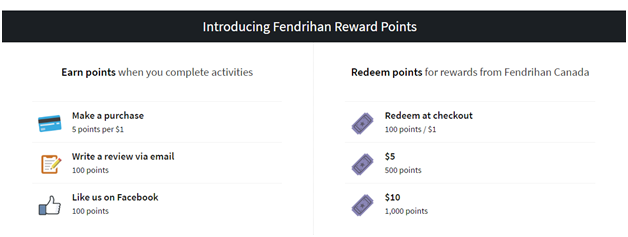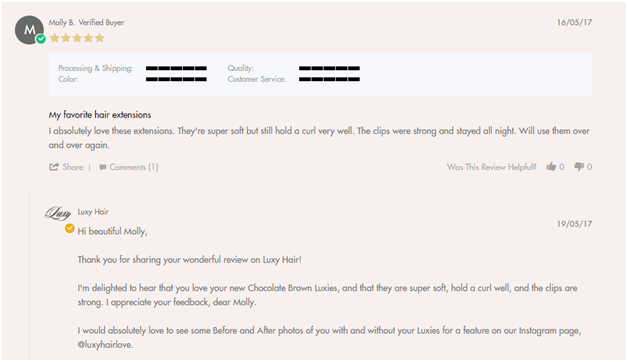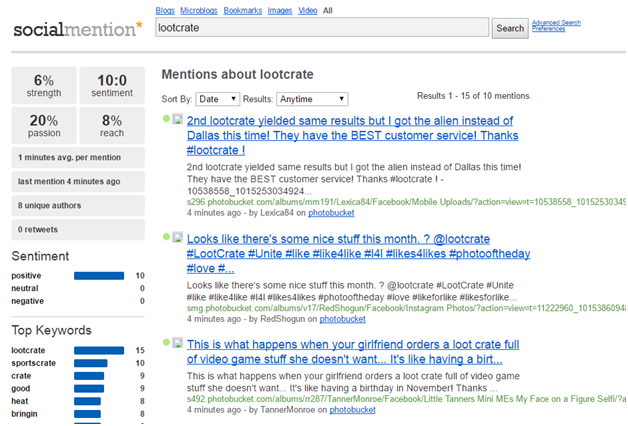If you were contemplating purchasing a certain product, would you rather trust the claims made by the manufacturer/seller or the experiences of people who have bought the product? It’s likely that you’d be more influenced by the opinions of your fellow consumers.
It’s important to consider that your customers would also have this same mindset when they’re planning to buy something from your website. When they see that a large percentage of people who have bought the product are raving about it, it could compel them to make the purchase too. So if you can manage to get authentic reviews from your customers, it could result in increased conversions.
But the tricky part is in collecting the reviews. Not everyone may feel the need to share with others their pleasant experience of ordering from you and how they’ve benefited from the product. So it comes down to you to make an active effort to collect genuine customer reviews. Here’s what you can do:
#1: Send Review Request Emails Post Purchase
This is one of the most important steps to generate more customer reviews. You need to send out follow-up emails at the right time when the product is still fresh in the customer’s mind. This is especially important if they loved the item because they might still be feeling a kind of euphoria after receiving the product. So they could leave more positive reviews.
You can use tools like Yotpo to automatically send out follow-up emails post purchase. This tool allows customers to submit their reviews within the mail itself. So they’re more likely to leave a review since they don’t have to go through multiple processes.
The tool can personalize your follow-up emails according to the device being used by the customer to enhance their experience. It also includes product recommendations so you have a chance of upselling. Moreover, Yotpo implements data science to make sure that your emails are delivered at a time the customer is most likely to respond.
CampSaver even managed to generate 10 times more reviews using Yotpo. The brand used Yotpo to send out personalized post-purchase emails encouraging customers to leave reviews. While they had been able to collect a total of 12,000 reviews in their first 11 years, the tool helped them generate 10,000 reviews within the first year alone.
Here’s how Amazon sends out their follow-up emails. As you can see, they keep it simple and simply ask how the item met the customer’s expectations. There’s an option to add a star rating and if the customer wants to leave a detailed review, they can visit the product page.
#2: Provide Incentives In Exchange for Reviews
When you ask customers to leave a review, you’re asking them for a favor. And even if you send them follow-up emails and make it as easy as possible for them to leave a review, they might still avoid it. So give them a good reason to write a glowing review for your products by offering them compelling incentives.
You could offer them with coupon codes, discounts, or other types of rewards in exchange for a review. In order to get the reward, they must leave a review. So you won’t be losing anything even if they don’t write one. Plus, you’re giving them a good reason to make a repeat purchase because they know they’ll have some discount on the next purchase.
LoyaltyLion is an excellent tool to help you devise and manage your incentives. Using this tool, you can decide whether you’ll be incentivizing reviewers with money back offers, percentage discounts, free shipping, or free products. You can even offer them discounts on certain product categories or enable them to rack up points when they leave a review.
Canadian ecommerce store Fendrihan, for instance, lets customers earn points when completing certain activities such as writing a review through email. This is an excellent option if you can’t afford to give a discount every time someone leaves a comment.
You can also use other rewards tools such as Swell and Sweet Tooth to design a reward program for people who leave a review.
#3: Thank Positive Reviewers
People took the time out to leave a review of your products. It’s only fair that you spend a few minutes of your time in thanking them. This can help garner positive sentiment towards your brand, which could compel the customers to make repeat purchases. Additionally, other customers who see your response might feel compelled to leave a review too.
There are several ways to thank people who leave a positive review for your products. If the review is on your product page, you can respond directly to the reviewer to say thank you. Even this simple gesture can be enough to let your customers know how much you appreciate them. Check out how Luxury Hair is using this tactic.
If your business doesn’t sell a physical product, you can also collect top reviews from social media and Google and feature them in your website homepage. Here’s an example of how ihateironing does it. Highlighting their review on your homepage is a great way to thank customers and show your appreciation for them.
In addition to this, you can also use social media to highlight positive reviews from your customers. You don’t necessarily have to showcase a formal review. Even featuring just a casual brand mention in which the user talks about how much they love your product could be a great way to show your appreciation for your customers.
This tactic might not necessarily lead to direct reviews. But it will help engage with your customers and enhance your relationship with them. And with a strong appreciation for your brand, customers may feel more responsive towards your review requests in the future. Additionally, seeing how you promote other customers, your new customers may also feel compelled to share their own photos on social media.
The Honest Company regularly features customer photos of their products as you can see in the screenshot below. They receive plenty of positive comments in the posts.
But before they share, they make sure to reach out to the customer and get their permission. The screenshot below shows the brand’s interaction with the customer. And you can clearly see how thankful the customer is towards the company.
While it’s important to thank positive reviewers, that doesn’t mean you should ignore people who leave negative reviews. Instead of ignoring bad reviews or reaching out in private, try giving a public response so people can see how responsive you are towards your customers. You can always invite them to send you an email so you can resolve the issue privately.
#4: Use Sentiment Analysis Tools to Find Potential Reviewers
With the prevalence of social media and blogs, consumers have become quite vocal when it comes to expressing their opinions about brands their experiences with products. While many customers may not necessarily leave a review on your site, they may still be expressing their thoughts through other platforms.
Your job is to find those customers and encourage them to leave a review on your site. Ideally, you should look for people who have expressed a positive feeling towards your brand if you wish to collect more positive yet authentic reviews. To find these customers, you can use sentiment analysis tools.
Social Mention is an excellent tool to help you with this. It’s easy to use and delivers accurate results of brand mentions in blogs, microblogs, images, videos, questions, and bookmarks. You can filter the results to display only results that express positive sentiments and then reach out to these customers asking them to leave a review on your site.
Brandwatch is another tool that’s perfect for social media monitoring. It helps you get instant access to customer conversions on social media and identify opportunities to connect with the right customers. So, you can use the tool to identify which customers have spoken positively about your brand. You can then reach out to these customers asking if they’d be interested in leaving a review on your site.
To encourage them to write the review, you can offer compelling incentives following the second tip in this post. Tools like Hootsuite Insights and Rapidminer can also help you monitor your online brand mentions.
Conclusion
These are some of the best ways to get more customer reviews for your product or service. Don’t forget to engage with in-store customers and provide them with an easy way to leave their reviews online. Maybe you could let customers use your tablet or phone, using which they can easily leave reviews online after their purchase, for instance. Your focus shouldn’t just be on online shoppers especially if you’re running a local business.

